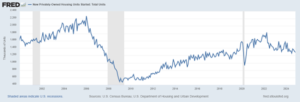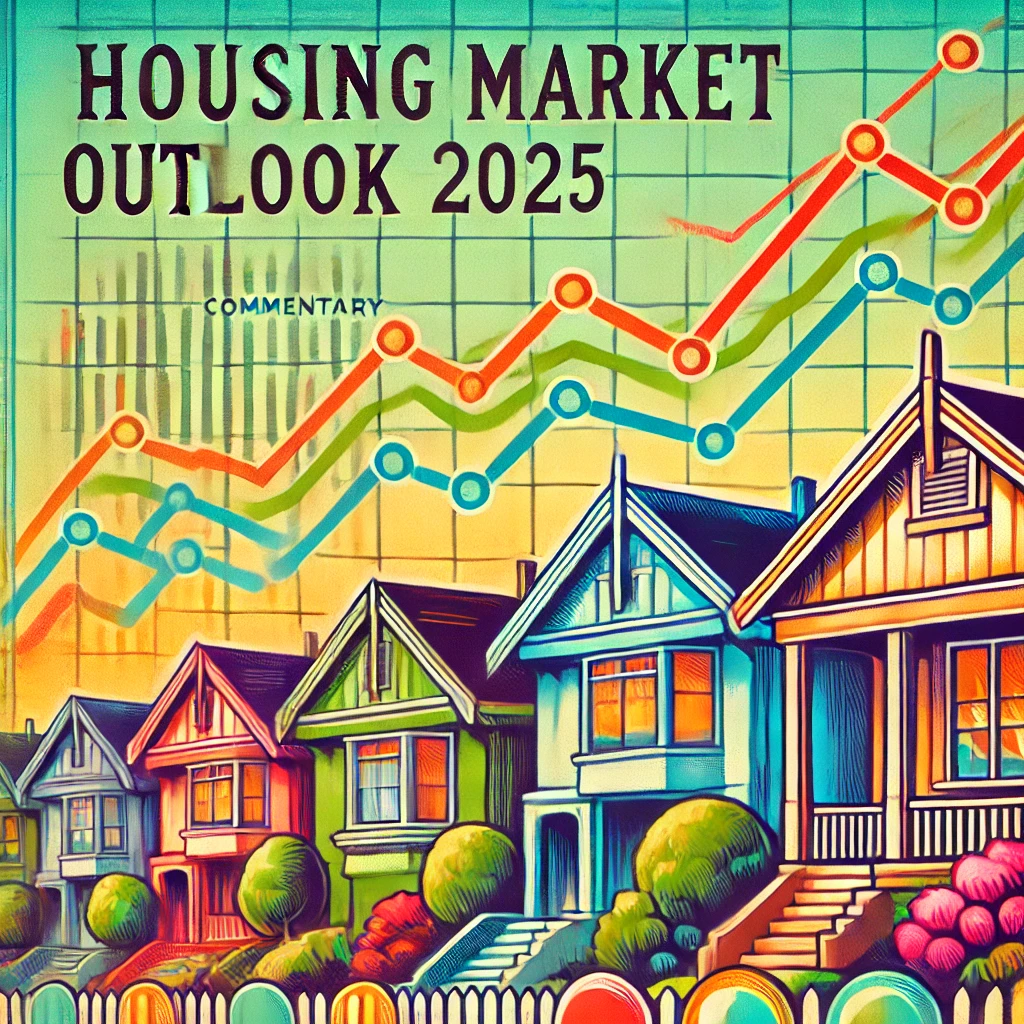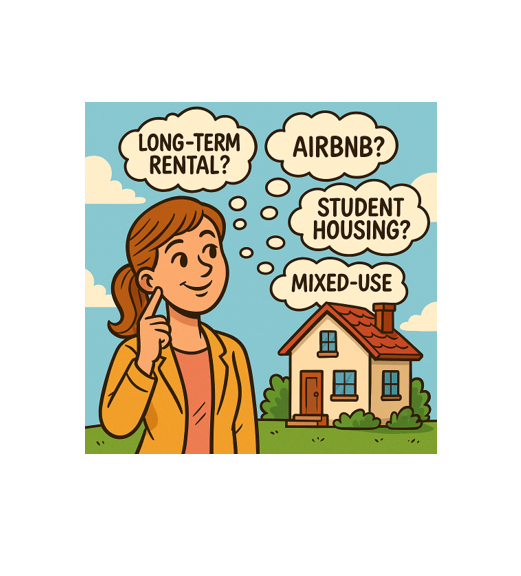“Real estate cannot be lost or stolen, nor can it be carried away. Purchased with common sense, paid for in full, and managed with reasonable care, it is about the safest investment in the world.” Franklin D. Roosevelt
Between 2000 and 2007, annual housing starts soared from 1.6 million to 2.3 million. Cheap money combined with ubiquitous sub-prime lending, created perverse incentives for developers and speculators to overbuild—a phenomenon known as malinvestment.

Federal Reserve St. Louis
Surprising no one, after the housing bubble the pendulum swung in the opposite direction. Within two years, housing starts plummeted to just 500,000 units annually.
The scrappage rate (teardowns, fires, floods, hurricanes, tornadoes, etc.) is about 1.5 million homes/year; a number home builders exceeded only three times since 2007. This figure doesn’t even account for population growth and household formation. Put it all together and the US is currently facing a shortfall of 4.5 million homes, meaning demand far exceeds supply.
After falling to a 4.05 million annualized rate in 2024, home sales are expected to tread water in 2025. Unlike builders of new homes, who can adjust by offering smaller or less expensive models, existing homeowners often have little incentive to sell. Many locked in ultra-low mortgage rates in 2020 and 2021 and are reluctant to give up that financial advantage, further exacerbating the supply shortage.
If demand is greater than supply, why aren’t homes selling like hotcakes, you might ask? Mortgage rates have surged from the historic lows of the pandemic era. Most would agree that the market is facing an affordability crisis.
The affordability crisis is about more than just home prices and mortgage rates. Rising costs for homeowner’s insurance are stretching budgets thin. Property taxes have climbed as local governments seek additional revenue, and maintenance costs have surged due to inflation in labor and materials. All of this adds up to a fundamental issue: housing is becoming too expensive for a growing segment of the population.
Meanwhile, restrictive zoning laws and other regulatory hurdles continue to derail new potential projects and constrain new construction. Developers face a litany of challenges—from density caps to lengthy and costly permitting processes—that make building affordable housing difficult, if not impossible. In many cases, even where new housing is technically feasible, local opposition, fueled by “not in my backyard” (NIMBY) attitudes, can derail projects before they begin.
Despite these challenges, housing is far from a bubble. Prices are underpinned by strong fundamentals, including persistent supply-demand imbalances. However, the market is at a crossroads; without significant changes to zoning and permitting practices, or a concerted effort to address affordability on multiple fronts, the crisis will only deepen.
One potential solution is for policymakers to focus on increasing supply—not through heavy-handed government intervention, but by making it easier for the private sector to build. Streamlining the permitting process, easing zoning restrictions, and reducing impact fees could go a long way toward encouraging development. While some argue for more public housing, history has shown that government-directed projects always and everywhere come with inefficiencies and higher costs.
Another avenue is to address the cost pressures that make homeownership unaffordable. Encouraging competition in the insurance market, advocating for property tax reforms, and finding ways to reduce maintenance costs could all provide some relief to homeowners.
The housing market is a study in contrasts. On one side, you have higher interest rates, rising costs, and stretched affordability. On the other, you have a chronic shortage of supply that supports prices and keeps the market from collapsing. These opposing forces mean that housing will likely remain a critical issue for policymakers, developers, and homeowners alike.
To summarize, residential housing is not in a bubble, as prices are supported by strong fundamentals, including a persistent supply/demand imbalance. Even if the US economy experiences a mild recession—which would all but guarantee lower interest rates/mortgage rates—housing prices would likely remain stable due to these underlying dynamics. Overall, expect modest improvement in the housing market, characterized by gradual increases in sales and new construction, even as broader economic growth slows.
Mark Lazar, MBA
CERTIFIED FINANCIAL PLANNER™









